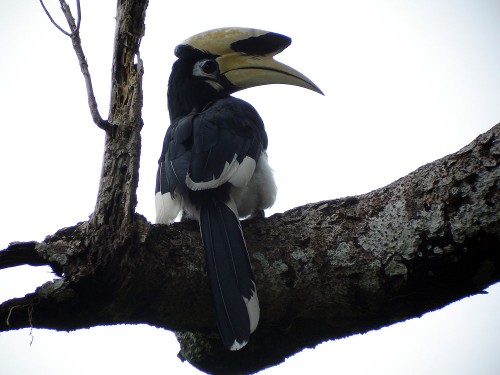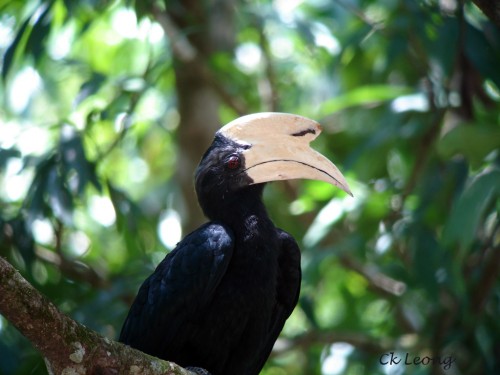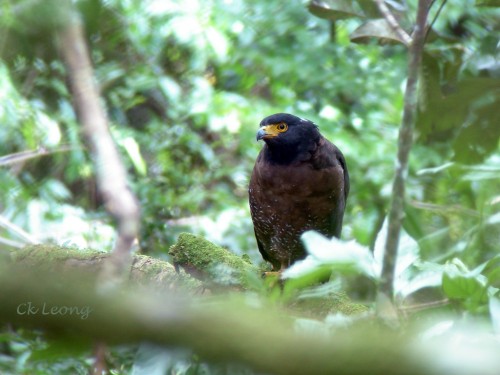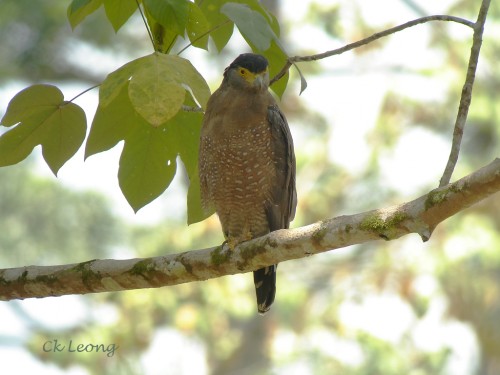Hornbill & Hornbill
On a recent morning trip to the Sepilok Rainforest Discovery Centre’s canopy walkway with my friends Nikki and Hayley, showy and loud hornbills came close and produced a wonderful display for all the visitors.
The Oriental Pied Hornbill Anthracoceros albirostis is the smallest of the Bornean hornbills. It is also the most common, most probably due to its ability to adapt to changing habitat. I have seen it feeding on oil palm fruit and on one occasion took a young of a White-breasted Wood-swallow. It is probably most at home in primary forest but also does well in swamp forest.
The Asian Black Hornbill Anthracoceros malayanus sticks to primary forest and its fig trees and because of the continued reduction of such forest, this bird is considered as near threatened. I still rate it as more common than the hornbills with the exception of the Pied and Wrinkled.
 August 29, 2010
|
Posted by CK Leong
August 29, 2010
|
Posted by CK Leong


 Categories:
Categories: 


Recent Comments